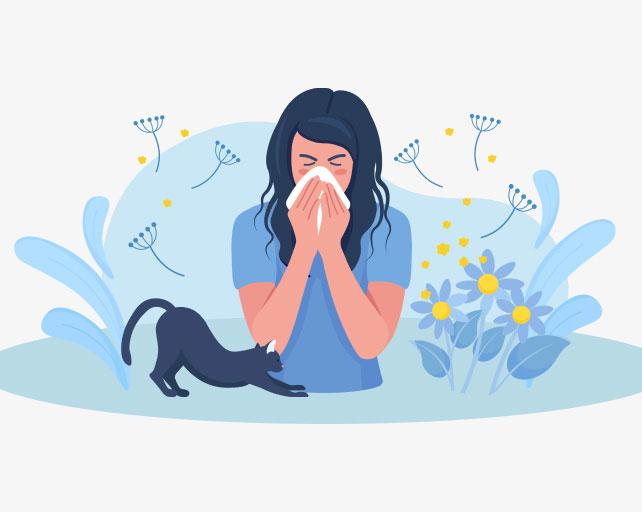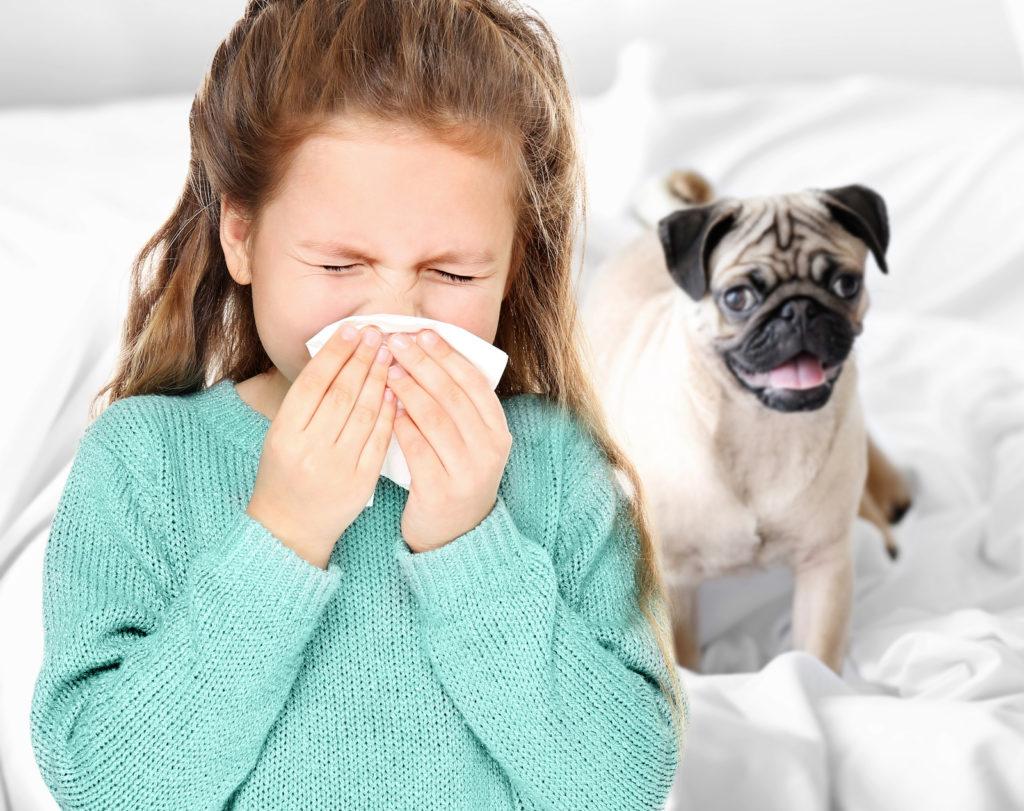How HVAC Air Duct Cleaning Can Help Combat Pet Allergies
The ductwork in your home can harbor dirt, dust, debris, and pet dander that can worsen the symptoms of allergies and decrease the overall air quality in your home. Air duct cleaning services remove this build-up, making pet allergies more manageable for sufferers.
Whether you're a cat fanatic, a loyal dog lover, or somewhere in between, your pets' loyalty and companionship truly make them members of the family. Despite this, it is common for these furry family members to affect indoor air quality, especially for those who suffer from allergies. Fortunately, your HVAC system can help to eliminate bothersome pet dander from the air, but keeping up with air duct cleaning and regular maintenance is necessary for the best results.
Understanding pet allergies and dander
One of the biggest misconceptions about allergies is that people are born with them and stuck with them for life. The truth is that allergies can change over time. A child can outgrow their allergies, or an adult can develop them for the first time without warning. And unfortunately, pet dander allergies are common.
Pet dander—or microscopic flakes of skin shed by pets of all types—can turn a comfortable home into an itchy, sneeze-filled hot spot. These nearly undetectable skin flakes can also attract other allergens like pollen or mold, further decreasing the indoor air quality in a home for allergy sufferers. While those without allergies are unaffected by these allergens, allergy sufferers may experience a wide range of symptoms when exposed, from itchiness in the ears, nose, and mouth to coughing, sneezing, runny nose, hives, or difficulty breathing.
Those with severe allergies should heed the advice of their healthcare professionals and avoid exposure to pet dander and other allergens. However, those with very mild, manageable symptoms can typically reduce their symptoms by decreasing pet dander in their homes through things like air duct cleaning. Despite this, they should keep in mind that pet dander is also found in saliva and urine, so while reducing shedding and improving air quality can help significantly, it might not eliminate all the symptoms associated with pet dander allergies.
HVAC systems and their role in allergy management
HVAC systems are crucial for keeping our homes warm in the winter and cool in the summer. Beyond that, many homeowners are unaware of the additional benefits provided by their systems. For example, an HVAC system aids in ventilating a home and improving indoor air quality. This is because standard HVAC systems are equipped with air filters that capture irritants and remove them from their air. Removing these small particulates from the air protects the HVAC system and allows it to operate at maximum efficiency. Likewise, it means that homeowners breathe in fewer of them, and thus the air quality inside the home is improved.
Air duct cleaning for pet allergy relief
While HVAC systems effectively improve air quality by filtering and circulating it indoors, regular maintenance is crucial for optimal performance. Most homeowners are accustomed to replacing their air filters every 30 to 90 days; however, air ducts often act as hidden allergen traps. Because all the air circulated through a traditional HVAC system moves through the ductwork, any dust, debris, or pet dander accumulating can enter the air indoors. For allergy sufferers, this can worsen the symptoms that they experience. With air duct cleaning for pet allergy relief, all of this build-up is removed by an HVAC expert. This allows the system to work more efficiently while dramatically reducing the presence of pet dander, dust, or pollen.
Keep in mind that an HVAC professional should perform air duct cleaning. They have the right tools and know-how to avoid damaging the ductwork and ensure that all debris and build-up are adequately and properly removed. Based on your home’s unique layout and other factors, the HVAC professional can also provide recommendations on the frequency of air duct cleanings needed, along with other information on improving indoor air quality and reducing pet allergy symptoms.
Beyond air duct cleaning: 4 steps to take to reduce indoor pet allergens
- Groom pets regularly- Staying on top of your pet’s grooming schedule is one of the simplest ways to reduce pet dander and hair throughout your home. For example, many dogs and cats shed their coats seasonally. During these periods, the symptoms experienced by allergy sufferers are likely to be higher than others. While you can’t eliminate pet dander or shed altogether, bathing and brushing your pet will allow you to capture and contain a lot of hair that would otherwise be spread throughout the home or inside of your HVAC air ducts. There are also many pet shampoos and other grooming products that effectively reduce shedding and dander.
- Vacuum frequently- Using a vacuum equipped with a pet-friendly filter can help eliminate the spread of pet dander from one area of the home to the next. It can also help effectively remove stubborn dander from rugs, upholstery, stairs, and other tough-to-reach areas. Amping up the vacuuming frequency is also a good way to minimize the buildup of pet hair and dander in-between air duct cleanings.
- Create pet-free zones- As much as pet allergy sufferers love their pets, keeping some areas of the home pet-free is a good idea. This creates a safer space when sufferers have allergy flare-ups. Likewise, allergy experts recommend keeping pets out of beds and off soft surfaces where dander can easily get trapped, like rugs and fuzzy blankets.
- Invest in an air purifier- An air purifier, such as Trane CleanEffects® Whole Home Air Cleaner, reduces the amount of pet hair and dander that makes its way into your air and, in turn, the HVAC ductwork. This may mean your system requires air duct cleaning less frequently for pet allergy relief. The whole home air cleaner is certified allergy and asthma friendly by the Asthma and Allergy Foundation of America and can eliminate particle sizes as small as 0.3 microns.
Find a local air duct cleaning pro today
With regular air duct cleaning, your home can once again be a comfortable haven for pets and allergy sufferers alike. For further indoor air quality improvements or to address your home’s unique needs, be sure to ask your HVAC technician for recommendations. Find a local pro now to get started!




